Étiquette : nucléaire
1953-1968: When « Water for Peace » was at the Center of US Politics
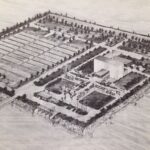
By Karel Vereycken, May 2024.

The current unprecedented bloody extermination of the Palestinians in Gaza reminds historians of some of the darkest pages of European history. Between 1940 and 1943, some 300,000 Jews confined in the Ghetto of Warsaw were killed by bullet or gas, combined with 92,000 victims of starvation and related diseases, the Ghetto’s Uprising, and the casualties of its final destruction.
Not in our name and never again! Only an immediate and durable cease-fire, concluded in the context of regional agreements for mutually beneficial reconstruction, can offer a perspective where peace becomes thinkable either in the form of two States, one State, or maybe even better, as a confederation. That might look ambitious and even Utopian.
This article looks at the ambitious proposals put on the table after the six days war of 1967, when major forces in the world stepped in and proposed, including by the smart use of civilian nuclear power, to increase the carrying capacity of the entire region. Nuclear desalination facilities and abundant energy from nuclear and hydropower, they thought, can provide the optimum conditions for both Israeli’s and Palestinian’s to have access to abundant fresh water for agriculture, industry and living.
The shock of the six year’s war
In June 1967, following border clashes over water resources and what appeared as a military mobilization of its Arab neighbors, Israel staged a sudden preemptive war against Egypt, Jordan and Syria.
- On June 5th, it destroyed more than 90 percent of Egypt’s air force on the tarmac. A similar air assault incapacitated the Syrian air force. Within three days the Israelis had achieved an overwhelming victory on the ground.
- On June 7, Israeli forces drove Jordanian forces out of East Jerusalem and most of the West Bank. The UN Security Council called for a cease-fire on June 7 that was immediately accepted by Israel and Jordan. Egypt accepted the following day. Syria held out, however, and continued to shell villages in northern Israel.
- On June 9 Israel launched an assault on the fortified Golan Heights, capturing it from Syrian forces after a day of heavy fighting. Syria accepted the cease-fire on June 10. Israel’s decisive victory included the capture of the Sinai Peninsula, Gaza Strip, West Bank, Old City of Jerusalem, and Golan Heights; the status of these territories subsequently became a major point of contention in the Arab-Israeli conflict.
The Arab countries’ losses in the conflict were disastrous. Egypt’s casualties numbered more than 11,000, with 6,000 for Jordan and 1,000 for Syria, compared with only 700 for Israel. The conflict resulted in hundreds of thousands of refugees and brought more than one million Palestinians in the occupied territories under Israeli rule.
Months after the war, in November, the United Nations passed UN Resolution 242, which called for Israel’s withdrawal from the territories it had captured in the war in exchange for lasting peace.
For most western elites, including most Jewish elites all over the world, the 6 day war came both as a shock and a reminder that the two main causes of war had been left unsolved: refugees (that of Palestinians pushed out and Jews arriving) and water access for all.
The « Johnston Plan » for water sharing
In the early 50’s, at the request of the United Nations Refugee Works Administration (UNRWA), experts of the US Tennessee Valley Authority (TVA), had designed an equitable water sharing program for the entire Jordan basin involving Israel, Palestine, Lebanon, Jordan and Syria.
Just as the orginal TVA, by building irrigation canals and dams, the program would have allowed the exansion of irrigated farmland and upshifting the economy and the living standards with energy from hydro-power.
In 1953, Eisenhower, pressured by his Secretary of State John Foster Dulles, sent Eric Johnston as his envoy to convince all the nations of the region to adopt the scheme known as the “Johnston plan.” To avoid countries willing to escape colonial exploitation joining the Communist or neutralist bloc, they argues, the US should offer development programs and keep them on the right side of history.
In Southwest Asia, a wonderful and well thought water sharing program was about to be adopted.
Unfortunately, Eisenhower, on March 28, 1956, approved the secret OMEGA Memorandum whose aim was to effect a reorientation of Nasser’s policies toward cooperation with the West while diminishing what were seen as his harmful attempts to influence other Middle East countries. Nasser, the first after Nepal, without informing his allies, had recognized Communist China on May 16. Pertaining to measures directed at Egypt, the provisions included a delay by the United States and Britain in concluding negotiations on financing the Aswan Dam.
As a result, John Foster Dulles, in cahoots with the British and the US southern cotton lobby1 , went ahead with suspending US financing of the Aswan dam (90%) which Nasser needed to irrigate farmland at home.
On Thursday July 19, 1956, Dulles asked the Egyptian Ambassador in Washington, Mr. Ahmed Hussein, to come to his office. When he arrived Mr. Dulles handed him a letter announcing the withdrawal of the United States offer to grant $56,000,000 towards financing the construction of the High Dam at Aswan.2
This decision unleashed a chain of events leading to the famous “Suez crisis” which Eisenhower fortunately brought to a halt once he realized it could end up in a nuclear conflict.
As a result, the most precious aspect of the “Johnston plan” for the ME, that of mutual trust building around the perspective of a shared, common future, was ruined after the Suez affair.
As a result, those that should have been partners of one single global plan to share the waters of the Jordan basin, went for it alone. Israel went ahead with its own National Water Carrier, tapping fresh water from the Sea of Galilee into a water conveyance systems bringing water from the northern border with Lebanon to the Negev desert deep South.
Jordan, with US financing, built the Eastern Ghor water conveyance system, now called “King Abdullah Canal”, to provide water for Jordan’s agriculture and capital while Syria constructed a dam on the Yarmuk, one of the tributaries of the Jordan river. 3
Nuclear desalination, the talk of the Day

Immediately after the six days war, however, the perspective of a massive investment in water and energy to solve the refugee and water crisis in the Middle East, became the talk of the day.
By these dramatic events, thanks to the men and women willing to answer them, the science, the technology and many of the plans elaborated between 1945 and 1967 to use nuclear power for peaceful aims came back on the table.
Key in this was leading US nuclear physicist Alvin Weinberg, who was the administrator of Oak Ridge National Laboratory (ORNL) during and after the Manhattan Project.
Weinberg was appointed in 1960 to the President’s Science Advisory Committee in the Eisenhower administration and later served on it in the Kennedy administration.
Weinberg inspired and organized his networks to propose projects for the peaceful use on civilian nuclear power. Weinberg’s career was brutally terminated when he was fired by Nixon in 1973 for pleading, just as Edward Teller did before his death, in favor of thorium fueled molten salt reactors (which don’t produce plutonium for nuclear bombs).
Water for Peace Conference of May 1967

Tragically and sadly, hardly three weeks before the Six day war, an international conference on “Water for Peace”, was held May 23-31, 1967, in Washington. President Lyndon Johnson (democrat) addressed the conference during the opening ceremonies, pledging that the United States would:
« continue work in every area which holds promise for the world’s water needs, » and would « share the fruits of this technology [nuclear desalination] with all of those who wish to share it with us. » 4
The Department of State Office of International Scientific and Technological Affairs considered the conference a « complete success, » and an internal report noted that,
« 94 countries were represented together with 24 international organizations; 635 official delegates, 61 participants from international organizations, and over 2,000 observers attended. » 5
One of the technical papers presented at the Water for Peace conference, entitled « Desalted Water for Agriculture » by Weinberg’s friend and colleague R. Philip Hammond, hypothesized that, with demonstrated methods of agriculture and « virtually demonstrated » methods of nuclear desalting, food could be grown with water costing 3 cents per day per person.
Alvin Weinberg was convinced, based on the work of his own institution, that these price estimates were « not unreasonable. »

After reading the paper in draft, Weinberg determined that more research was needed, and passed the paper on to Dr. J. George Harrar at the Rockefeller Foundation because of its « longstanding interest in the development of countries, such as Mexico, that suffer from a lack of water. »
Harrar, speaking about a recent discussion he had with Israeli President David Ben-Gurion, said:
« I understand that it is his hope and plan that atomic power for water desalination may become a reality in the Negev one day. »6
Weinberg reported that Atomic Energy Commission (AEC) Chairman Glenn T. Seaborg and AEC Commissioner James T. Ramey had “expressed interest in such agro-industrial complexes in several of their recent speeches. » 7(*5)

In a visionary speech, called “The Next Stage of Nuclear Energy,” Weinberg developed even more this idea of building “Food factories in the desert”:

“One can now visualize a new kind of desert agriculture, conducted in units so highly rationalized as to be designated « food factories » rather than farms. In these food factories, plants would be watered and fertilized at precisely the right time, and in precisely the right amounts. Fortunately fertile coastal deserts suitable for such food factories occur in many parts of the world.
The food factory would naturally be accompanied by other energy-intensive chemical processes, particularly those based on electrolytic hydrogen. I have already mentioned production of ammonia; one could imagine other processes such as reduction of iron ore by hydrogen, or electrolytic refining of bauxite to produce aluminium, or production of caustic and chlorine, and thence polyvinyl chloride (PVC) plastics.
Altogether what one contemplates is the nuclear powered agro-industrial complex already alluded to by AEC Chairman Seaborg in his opening remarks. This summer we conducted at the Oak Ridge National Laboratory a study under the guidance of Professor E.A. Mason of the Massachusetts Institute of Technology to examine in some detail just what such a nuclear powered agro-industrial complex might look like.
Even this near term complex, based on energy from light water reactors, seems surprisingly attractive. In this complex, a variety of crops would be grown on 140,000 acres of irrigated desert. Ammonia, phosphorus from phosphate rock, caustic, chlorine, and salt would be manufactured.
The total investment (including a 2000 Mwe reactor and a 500 million gallons a day desalting plant) comes to about $900 million. The annual value of products produced is $330 million, of which $100 million are agricultural products.
The profit on the venture is computed to be $136 million per year, or 15% of the capital investment. I believe that the nuclear powered agro-industrial complex may well become an impressively powerful instrument for development. But it is idle to speak of the agro-industrial complex unless the main ingredient — the cheap and reliable reactor — is available.” 8
On June 13, hardly days after the six day’s war, AEC chairman Seaborg wrote a letter to Johnson’s Secretary of State Dean Rusk:
“The recent developments in the Middle East prompt me to recall to your attention certain projects which have been under consideration for this region for some time in the past. I am referring to the two dual-purpose nuclear desalting projects, one proposed for installation in Israel and the other proposed for installation in the United Arab Republic (Egypt and Syria were one single state between 1958 and 1961), which were the subject of your memorandum to the President of May 21, 1966 … It occurs to us that the possible usefulness of these projects in the overall settlement of the Middle East dispute may be rather significant …
As you know, both Israel and the UAR have attached considerable importance to their respective projects. The proposed Israeli project, in particular, always had the advantage of providing Israel with a source of water not subject to interruption by neighboring states and not dependent on the allocation of the already inadequate water resources of the Jordan Valley.
Once again, it seems to me that the recent events may well intensify the problem of water allocation in the area rather than ease it. One or more desalting plants would both add significantly to the total volume of water available to the region …
It is interesting to note that at the recent Water for Peace Conference in Washington, UAR and Israeli representatives participated in a collateral meeting of nations interested in nuclear desalting and reaffirmed the strong interest of their governments in these projects.”
In the same letter, Seaborg underlined that US assistance for a nuclear desalination program,
“could possibly be used to secure Israeli agreement to place its entire nuclear program, including the Dimona project, under IAEA safeguards. It seems to me that the recent events probably increase rather than decrease the danger that one or more of the Middle Eastern countries will feel, however mistakenly, that its best interest in the future would be served by the acquisition of nuclear weapons.”
On June 23, 1967, Lewis Strauss, who was a founding member and, starting 1953, the head of the AEC till 1958, pressured his friend and protector Eisenhower to speak up for nuclear desalination for peace in the Middle East, by giving him the following memo called “A proposal for our Time”:
“Attention to the debates in the United Nations since the end of May must convince the observer that an end to the trouble in the Near East is not in sight. The introduction of a new and dramatic element will be required to establish a climate in which peace can begin to be negotiated. The resources of diplomacy appear exhausted, and the « lie direct » has been exchanged so often that men can hardly be expected to reach agreement by rational discussion in the atmosphere which has been created.
“The two fundamental problems in the Near East are (a) water, and (b) displaced populations. It is these issues which have exacerbated international relationships in that area over the years, and they are not to be resolved by political or military measures. By a simple, bold, and imaginative step, it is in our power to solve both problems … Two of the installations would be located at appropriate points on the Mediterranean coast of Israel and a smaller one at the northern end of the Gulf of Aqaba in either Jordan or Israel, as the most suitable terrain may dictate….
“Were the President of the United States to electrify the world by such a proposal, as President Eisenhower did in his Atoms-for-Peace speech to the United Nations in 1953, it would be hailed and welcomed by millions who now can see no way out of the morass in which the powers are presently floundering with its threat of triggering more widespread war. The proposal might well be the beginning of a new life in the lands of the oldest civilizations.
“The proposal, of course, does not settle the boundary disputes and other acute issues now confronting the belligerents, but their settlement would be immensely accelerated and facilitated by the pressure from all sides to get ahead with such a project where delay would be counted in human lives and misery. It could be announced that no affirmative steps would be taken until negotiations at least began. In the atmosphere that would immediately follow such a proposal, the leaders of the Near Eastern countries would be invited to come together on the basis of the proposals. They have a common forum in the International Atomic Energy Agency.”
“The introduction of fresh water from all three plants into the arid and semi-arid areas would have the effect of opening to settlement many hundred square miles which heretofore have never supported human life (other than on a nomadic basis), and the controversy over the division of the Jordan River would become de minimis.
“The work of building the great plants, laying the pipe lines, constructing reservoirs, power lines, irrigation ditches, etc., will absorb the unskilled labor of thousands of displaced persons. When the plants are in operation, the labor force could be settled in irrigated areas under conditions far superior to any life that they have ever experienced.
“Solely as a measure of magnitude, it might be noted that the completed project will represent substantially less than one year’s expenditure on the moon program. It will pay for itself and return income in perpetuity, retiring the borrowings incurred and rewarding the governments and individuals with vision enough to have subscribed to it initially.
“Cooperation of the Arab and Israeli governments will be necessary in order to agree upon a modus vivendi for allocating water and power, and it will be apparent that any government which simply declined to discuss or participate in such a cooperative arrangement would have to answer to its citizens sooner or later.” 9
Lewis Strauss

Lewis Strauss, started his career, not in nuclear science, but working as an investment banker at the Wall Street investment bank Kuhn, Loeb & Co. On March 5, 1923, he married Alice Hanauer, the daughter of Jerome J. Hanauer, who was one of the Kuhn Loeb partners.
But Strauss was also a philanthropist financing and leading several Jewish organizations. In 1933 he was a member of the executive committee of the American Jewish Committee. He was active in the Jewish Agricultural Society, for whom by 1941 he was honorary president. By 1938 he was also active in the Palestine Development Council, the Baron de Hirsch Fund, and the Union of American Hebrew Congregations.
However, he was not a Zionist and opposed the establishment of a Jewish state in Mandatory Palestine. He did not view Jews as belonging to a nation or a race; he considered himself an American of Jewish religion, and consequently he advocated for the rights of Jews to live as equal and integral citizens of the nations in which they resided.
Politically, Strauss got befriended and worked directly with President Herbert Hoover and felt irritated by FDR.
Edmond de Rothschild

One month after Strauss memo to Eisenhower, on July 18, US Ambassador Bruce reported the fact that French-Swiss banker Edmond Adolphe de Rothschild, in two letters to the London Times, had advocated for three nuclear desalting plants for Israel, Jordan, and the Gaza Strip to assist in the resettlement of more than 200,000 refugees.
This provoked comments and questions in the House of Commons, which generally approved the idea or at least further exploration of it.
British Prime Minister Wilson was convinced of the technical-economic feasibility of the plan, but the Foreign Office was concerned about the cost.
According to Embassy officials in London: “Apart from the obvious political difficulties, it was mainly a question of a very large amount of cheap money, which the UK did not have available.”
However, Edmond de Rothschild was apparently willing to put up 1 million pounds sterling of his own money. 10
Humanitarian and/or Business Plan?
Both Strauss and Rothschild shared the same idea, that of forming a corporation with a charter resembling that of COMSAT, a public, federally funded corporation created in 1962 intended to develop a commercial international satellite communication system. Although Comsat was government regulated, it was equally owned by some major communications corporations and independent investors.
The new corporation, wrote Strauss, should be created,
“with the Government subscribing to half of the stock, the balance to be offered for public subscription in the security markets of the world. The amount thus to be raised, say $200,000,000, would be used to begin construction of the first of three large nuclear plants for the dual purpose of producing kilowatts of electrical energy and desalting sea water, with emphasis on the latter purpose.”
“Private capital both in the United States and Great Britain would certainly respond to the challenge of such an enterprise on the initiative of the Government,” concluded Strauss.
Strauss and Eisenhower

Strauss was a staunch anti-communist and successfully lobbied Truman, who publicly announced the decision, as demanded by Strauss, to develop the hydrogen bomb on January 31, 1950. Less than three years later, the US detonated the world’s first H-bomb, only to have the Soviets follow suit 10 months later. Strauss’ determination to develop the hydrogen bomb was doggedly opposed by physicist J. Robert Oppenheimer, the chairman of the AEC’s general advisory committee who led the Manhattan Project in Los Alamos, New Mexico. Fearing the hydrogen bomb would only accelerate a dangerous Cold War arms race, Oppenheimer had argued for more openness about the size and capabilities of America’s nuclear arsenal, which Strauss thought would only benefit the Soviets.
After leaving the AEC in 1950, Strauss re-entered government when newly elected President Dwight D. Eisenhower appointed him as an atomic energy adviser in February 1953. Strauss, who had been a major donor to Eisenhower’s presidential campaign, wielded considerable power as all federal agencies were required to clear their atomic-related activities with him. Months later, Eisenhower asked Strauss to chair the AEC. Strauss agreed on one condition: that Oppenheimer no longer serve as a consultant to the commission…
Strauss’ plan for desalination became known as the “Strauss-Eisenhower plan” because Eisenhower, whose major speech Atoms for Peace at the UNGA in 1953 had been widely welcomed by the American public, published an article, largely inspired by the Strauss 1967 memo and edited by editor in chief of Reader’s Digest Ben Hibbs in that magazine’s June 1968 edition.
The full text of Eisenhower’s article was introduced as early on May 16 in the Congressional record (p. 13756), by Senator James G. Fulton.
Noteworthy, the fact that Robert F. Kennedy, who saved the world from nuclear extinction by using his back channels with Russian officials, was assassinated on June 8 of the same year.
In the overall inspiring article in his Reader’s Digest, former president Eisenhower, visibly convinced by Admiral Lewis Strauss and his banker’s friends such as Edmond de Rothschild who thought it was good business, wrote that:
“There is every reason to suppose that it could be a successful, self-sustaining business enterprise, whose revenues would derive from the sale of it products – water and electricity – to the users. Our government would make an initial investment in some of the corporation’s stock, and the rest would be sold to private investors in the security markets of the world. Additional money would be raised through the international marketing of convertible debentures. We are assured by international bankers that the financial world, under normal conditions, would welcome such an investment opportunity.”
However, Eisenhower made an extremely crucial point, that is very relevant for today:
”Most of the professional diplomats seem to think that we must have peace in the Middle East before the plan can be implemented. I contend that the reverse is true: the proposal itself is a way to peace.”
Unfortunately, in his Reader’s Digest article, the former president, or the editor, or by common decision of both, left out a key passage of Strauss earlier (June 1967) proposal, a passage implicitly proposing to make the Middle East desalting proposal the cornerstone for ending the Cold War!
Strauss, interestingly enough, had changed the axioms of his thinking, because the view he presented in 1967 (start some sort of peaceful cooperation with the USSR) was miles away from his views in 1950 (contain the Soviets at all cost). That said key passage reads as follows:
“Design and construction contracts would be let on bids in the several countries which have had experience in building large nuclear reactors, i.e., the United States, the United Kingdom, France, and the USSR.”
Those days Political parties
While today’s US party platforms are utter lunacy, in 1968, when Nixon was running against Humphrey and Wallace, voters could choose between two parties favoring nuclear desalination!
The Democratic party platform:
“To maintain our leadership in the application of energy, we will push forward with research and development to assure a balanced program for the supply of energy for electric power, both public and private. This effort should go hand in hand with development of « breeder » reactors and large-scale nuclear desalting plants that can provide pure water economically from the sea for domestic use and agricultural and industrial development in arid regions, and with broadened medical and biological applications of atomic energy. In addition to the physical sciences, the social sciences will be encouraged and assisted to identify and deal with the problem areas of society.
“… Lasting peace in the Middle East depends upon agreed and secured frontiers, respect for the territorial integrity of all states, the guaranteed right of innocent passage through all international waterways, a humane resettlement of the Arab refugees, and the establishment of a non-provocative military balance. To achieve these objectives, we support negotiations among the concerned parties. We strongly support efforts to achieve an agreement among states in the area and those states supplying arms to limit the flow of military equipment to the Middle East. We support efforts to raise the living standards throughout the area, including desalinization and regional irrigation projects which cut across state frontiers.” 11
The Republican Party platform:
“We support efforts to increase our total fresh water supply by further research in weather modification, and in better methods of desalination of salt and brackish waters.”
And on the Middle East, it said:
“To replace the ancient rivalries of this region with new hope and opportunity, we vigorously support a well conceived plan of regional development, including the bold nuclear desalination and irrigation proposal of former President Eisenhower.” 12(*10)
Conclusion
In one way or another, Middle East Peace, based on the sharing of water and energy obtained by the most advanced technologies (in terms of energy density), were on the agenda those days, and sometimes even conceptualized as the cornerstone of a potential new international architecture of security and mutual development ending the geopolitics of the Cold War.
Lyndon LaRouche’s proposals in 1975 and his Oasis plan currently proposed and promoted by the international Schiller Institute want to do exactly that. 13

LaRouche’s « Blue Peace » Oasis plan, to be put on the table of diplomatic negotiations as the « spine » of a durable peace agreement », includes:
- Israel’s relinquishment of exclusive control over water resources in favor of a fair resource-sharing agreement between all the countries in the region;
- The reconstruction and economic development of the Gaza Strip, including the Yasser Arafat International Airport (inaugurated in 1998 and bulldozered by Israeli in 2002), a major seaport backed up by a hinterland equipped with industrial and agricultural infrastructure.
- A floating, underwater or off-shore desalination plant will be stationed in front of Gaza.
- The construction of a fast rail network reconnecting Palestine (including Gaza) and Israel to its neighbors;
- The construction, for less than 20 billion US dollars of both the Red-Dead and the Med-Dead water conveyance system composed of tunnels, pipelines, water galeries, pumping stations, hydro-power units and nuclear powered desalination plants.
- Salted sea water, arriving at the Dead Sea, before desalination, will « fall » through a 400 meter deep shaft and generate hydro-electricity.
- Following desalination, the fresh water will go to Jordan, Palestine and Israel; the brine will refill and save the Dead Sea.
- The nuclear powered desalination plant will produce heat and electricity with « hybrid desalination » combining evaporation and Reverse Osmosis (RO) ;
- The industrial heat of the high temperature reactors (HTR) will also be tapped for industrial and agricultural purposes;
- The reservoirs of the water conveyance systems will also function as a Pumped Storage Power Plant (PSPP), essential for regulating the region’s power grids;
- Part of the seawater going through the Med-Dead Water conveyance system will be desalinated in Beersheba, the « capital of the Negev » whose population, with new fresh water supplies, can be doubled.
- New cities and « development corridors » will grow around the new water conveyance systems.
- Israel’s Dimona nuclear center and power plant (currently a military reactor and medical nuclear waste treatment center) can form the basis to create a civilian nuclear program and contribute to the construction of nuclear desalination plants. Jordan can contribute to the program with it vast reserves of thorium and uranium.
- US and Israeli plans to prepare the housing of 500,000/1 million people in the Negev exist but should be entirely reconfigured in terms of both scope and intent. They cannot be a mere extension of exclusively Jewish settlements, but should offer the opportunity to all Israeli citizens, in peaceful cooperation with the Bedouins who live there, the Palestinians and others, to roll back a common enemy: the desert.
- The policy of illegal settlements in the West Bank shall be halted. Settlers will be encouraged (through taxation, etc.) to relocate to the Negev, where they, in a shared effort with the Bedouins, Palestinians and others, can take up productive jobs and make the desert bloom (62% of Israeli territory).
PS: The Oasis Plan plan aims to bring peace to all through mutual development. It has nothing to do with Netanyahu’s Ben-Gurion canal project, a megalomaniac plan for a navigation canal connecting the Red Sea with the Mediterranean aimed to compete with the Suez Canal.
NOTES:
- The British Government was reported greatly concerned with the Russian arms offers; Prime Minister Eden regarded the offer to Egypt as the most “sinister” development in the East-West conflict since the Soviets took over Czechoslovakia. The British Government informed the United States in October 1955 it regarded a Russian undertaking to construct and finance the High Aswan Dam following the sale of Czech arms to Egypt would be a very serious blow to Western prestige and influence in the Middle East, providing the Russians with a means of exercising a dominating influence politically and economically in this area. ↩︎
- Myrl Kennedy Bailey, 1966 Thesis, « THE POLICIES OF- JOHN FOSTER DULLES RELATIVE TO THE SUEZ CRISIS OF 1956. »
↩︎ - Karel Vereycken, Israel-Palestine, Time to Make Water a Weapon for Peace, artkarel.com, March 2024. ↩︎
- Public Papers of the Presidents of the United States: Lyndon B. Johnson, 1967, Book I, pages 555-558. ↩︎
- Department of State, SCI Files: Lot 69 D 217, The Department during the Administration of Lyndon B. Johnson, November 1963-January 1969, Vol. XI, Science and Technology. The proceedings of the conference were published as the “International Conference on Water for Peace,” May 23-31, 1967. ↩︎
- Letter from Harrar to Weinberg. ↩︎
- Letter from Weinberg to Bell. ↩︎
- https://www.iaea.org/sites/default/files/publications/magazines/bulletin/bull9-6/09604701121.pdf ↩︎
- https://history.state.gov/historicaldocuments/frus1964-68v34/d166 ↩︎
- Airgram A-222 from London, July 18; National Archives and Records Administration, RG 59, Records of the Department of State, Central Files, 1967-69, E 11-3 NEAR EAST. ↩︎
- https://www.presidency.ucsb.edu/documents/1968-democratic-party-platform ↩︎
- https://www.presidency.ucsb.edu/documents/republican-party-platform-1968 ↩︎
- See note 1. ↩︎
Alain Bécoulet: la Science, puissant vecteur de rapprochement entre peuples

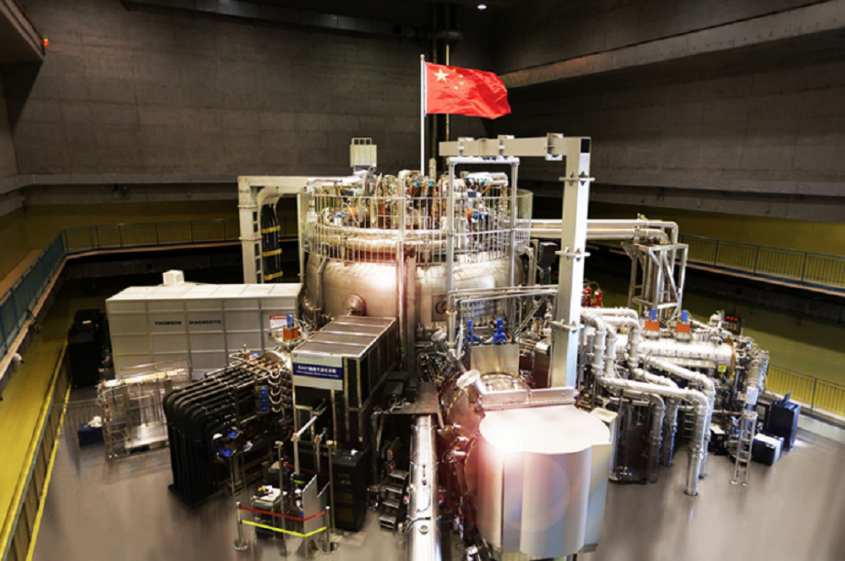
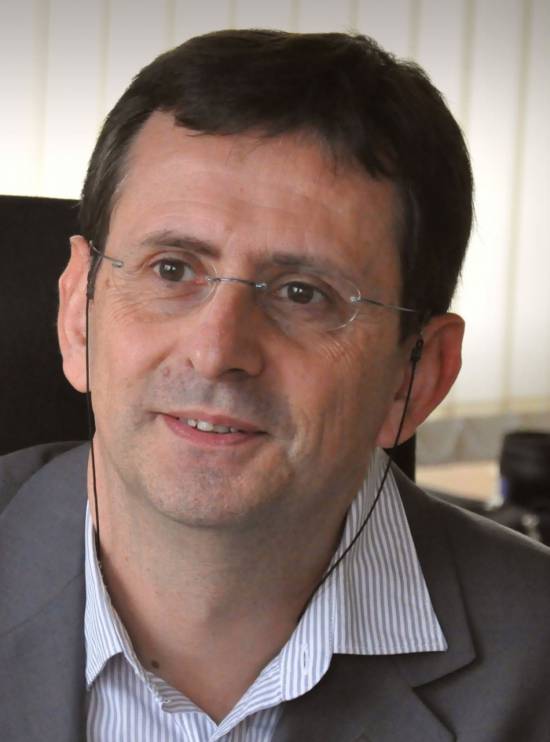
La coopération scientifique entre la France et la Chine dans le domaine du nucléaire civil est très ancienne.
Voici un entretien avec un chercheur qui y participe depuis trente ans, le physicien Alain Bécoulet, ancien directeur de l’Institut de recherche sur la fusion par confinement magnétique (IRFM) du CEA, aujourd’hui directeur du domaine « ingénierie » de l’International thermonuclear experimental reactor (ITER), un tokamak géant en voie d’assemblage à Cadarache, près d’Aix-en-Provence (13).
Au cours de sa longue carrière, Alain Bécoulet a travaillé, avant ITER, sur les tokamaks JET (Culham, Royaume-Uni), DIII-D (San Diego, Californie) et enfin Tore Supra (Cadarache, France).
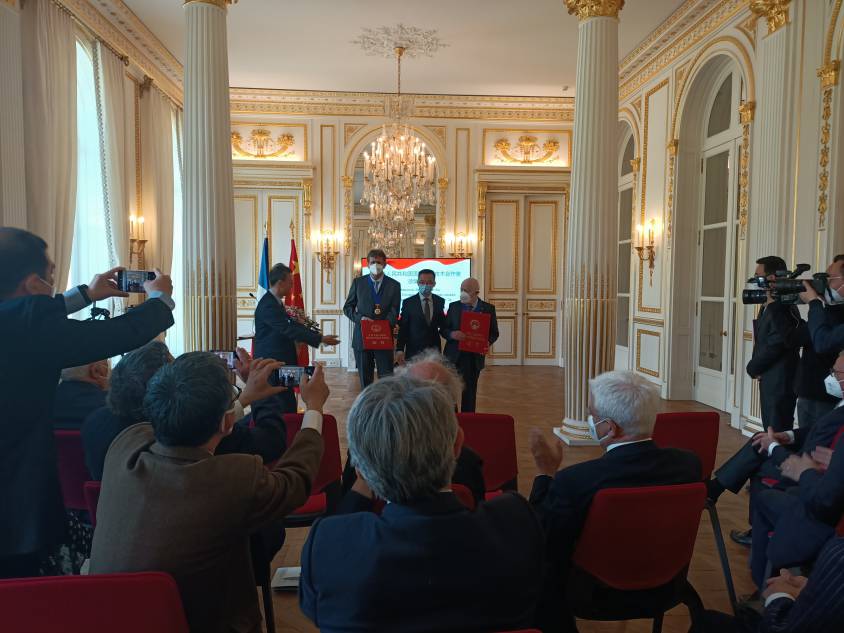
Karel Vereycken : Monsieur Bécoulet, bonjour.
Le 28 mars, lors d’une conférence de presse à Paris, en présence d’Alain Mérieux et de l’ancien président de l’Assemblée nationale Bernard Accoyer, le gouvernement chinois, par la voie de son ambassadeur, a remis son prix de la coopération scientifique et technologique internationale à deux chercheurs français au cœur de la coopération franco-chinoise : le professeur Jacques Caen, hématologue renommé, et vous-même, pour votre travail sur la fusion thermonucléaire dans le cadre du projet ITER.
Coût croissant des énergies fossiles et renouvelables, climat, conflits et croissance démographique. Autant de phénomènes qui interpellent brutalement nos gouvernements sur l’importance de l’énergie. Rappelez-nous brièvement ce qu’est la fusion et en quoi elle apporterait une réponse à ces défis ?
Alain Bécoulet : La fusion de noyaux atomiques légers est le mécanisme qui prévaut au fonctionnement de notre Soleil, et des étoiles en général. C’est une source nucléaire d’énergie virtuellement sûre, propre, décarbonée et très abondante. Si on arrive à la maîtriser, elle entrerait donc tout naturellement en première place des futurs mix énergétiques. Le défi, pour cela, est sa domestication sur Terre, qui entre seulement, avec ITER, dans sa démonstration de faisabilité à l’échelle 1.
Une fois cette étape franchie par ITER dans la deuxième moitié des années 2030, la voie sera ouverte vers des réacteurs électrogènes basés sur le principe de la fusion.
Puisque vous étiez de l’aventure, entre les premiers tokamaks et ceux d’aujourd’hui, quelles innovations ? Les progrès dans la supraconductivité ont-ils contribué à ces avancées ? Quel est l’objectif du tokamak géant ITER par rapport à ses prédécesseurs ?
Le défi est effectivement dans le déclenchement puis le maintien des réactions de fusion dans un « réacteur » de taille raisonnable, c’est-à-dire dans la miniaturisation à l’extrême d’un soleil.
Pour cela il a fallu, et il faut encore, plusieurs décennies non seulement de physique et d’expérimentation sur des « tokamaks » (c’est le nom que l’on donne à ce type de réacteurs) de formes et tailles diverses, mais également de nombreux développements et innovations technologiques.
Vous citez la supraconductivité : elle nous a en effet permis un saut considérable dans la réalisation des aimants continus nécessaires au confinement du milieu extrêmement chaud (une centaine de millions de degrés) dans lequel se passent les réactions de fusion.
La taille du tokamak est ensuite directement liée à la puissance que l’on peut extraire de ce type de réacteur, avec un effet à seuil en deçà duquel on ne peut pas déclencher de réactions. ITER, avec ses 830 m3 de « plasma » (c’est l’état dans lequel est le mélange de réactifs porté à de telles températures) va nous permettre de produire environ 500 MW de puissance fusion.
Un peu comme les missions spatiales, ITER (c’était d’ailleurs un des objectifs fixés par Gorbatchev et Reagan) a su réunir dans un projet commun des pays pas forcément amis. Le partage complet des informations et de la propriété intellectuelle est-il un élément fondamental pour cette coopération gagnant-gagnant ?
ITER est en effet construit par l’Organisation internationale, suite à un traité signé fin 2006 par sept partenaires : Chine, Corée du Sud, Etats-Unis, Inde, Japon, Russie et Union européenne. Cette dernière est le membre-hôte, hébergeant le site de construction à Cadarache, dans le sud de la France. Le traité ITER prévoit un partage complet de la propriété intellectuelle développée lors de la construction et de l’exploitation expérimentale d’ITER entre tous les membres.

Quelles retombées pour l’économie française ?
ITER est construit en France et il est clair que les retombées économiques sont très importantes pour le pays (contrats de construction et de transport, hébergement des personnels et de leur famille…). A ce jour (on est encore à environ cinq ans de la fin de l’assemblage du tokamak), on estime à plus de 4 milliards d’euros ces retombées.
La politique des sanctions et d’embargos ne risque-t-elle pas de nuire à une science dont les progrès, en dernière analyse, profitent à tous? Les 10 millions de pièces nécessaires à l’assemblage d’ITER seront-elles au rendez-vous?
De manière générale, ITER est construit par assemblage des millions de pièces fabriquées et fournies « en nature » par ses membres. Les échanges entre pays sont donc au cœur du maintien du planning de construction. L’assemblage d’ITER est ainsi fortement perturbé depuis deux ans par les effets de la pandémie de Covid-19, qui a non seulement déstructuré la production industrielle partout dans le monde, mais également ralenti et compliqué considérablement les transports.
Toute difficulté politique entre les membres d’ITER est effectivement également de nature à perturber la mise au point de la fusion. La situation de tension actuelle entre la Russie et les autres pays en fait partie. Rappelons cependant qu’ITER n’est pas une « collaboration » internationale, mais bel et bien un traité international.
A ce jour, ce traité n’a pas été questionné par ses membres et l’impact est essentiellement lié à la grande complication des échanges internationaux, dont ITER dépend fortement en effet.
En quoi la Chine contribue-t-elle à ITER ?
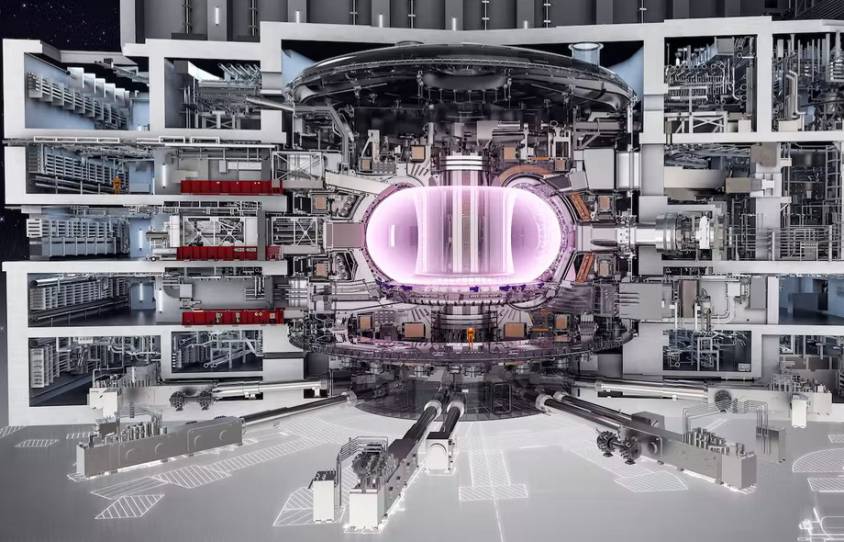
La Chine est l’un des signataires du traité ITER et à ce titre, contribue au projet via des fournitures en nature et sa contribution au budget de l’Organisation internationale. Elle a, en parallèle, un programme national de recherche et développement ambitieux et dynamique qui prévoit, comme plusieurs autres membres, de tirer tous les enseignements d’ITER dans le design et la construction des futurs réacteurs.
La France, notamment EDF, n’a-t-elle pas contribué dès le début au développement du nucléaire civil dans ce pays ? Comment a évolué la coopération franco-chinoise dans ce domaine ? Comment a-t-on su créer une confiance mutuelle dans un domaine aussi sensible ?
La coopération franco-chinoise en fusion a déjà plus de trente ans, et je suis d’ailleurs particulièrement fier d’y avoir contribué activement très tôt. A ce stade, elle a été portée par les grands instituts de recherche que sont le CEA d’une part et l’Académie des Sciences de Chine de l’autre. La CNNC (Compagnie nucléaire nationale chinoise) s’est jointe il y a une vingtaine d’années, via son institut SWIP. Les grands industriels du nucléaire commencent à rejoindre la fusion essentiellement depuis l’étape ITER.
Quel rôle avez-vous pu jouer dans ces échanges ?
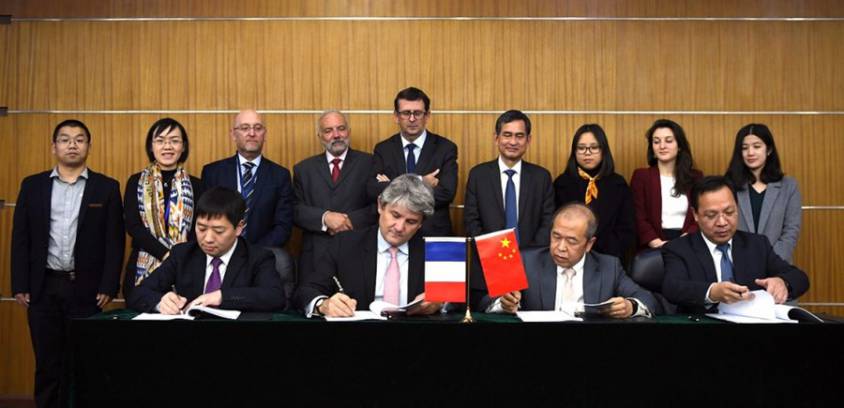
J’ai personnellement contribué au rapprochement de la Chine et de la France en fusion depuis plus de trente ans. Mes premières contributions ont évidemment été purement scientifiques et liées à mes propres activités de recherche, incluant de nombreux échanges dans les deux sens. Ce rôle s’est progressivement développé et amplifié au fur et à mesure du développement de mes responsabilités au CEA et au sein du programme fusion européen (programmes de recherche communs, échanges de matériel, projets communs, etc.), culminant au milieu des années 2010 par la création de SIFFER, le Sino-French Fusion Energy centeR, laboratoire virtuel joignant les forces en fusion du CEA, de l’Académie des Sciences Chinoise et du CNNC, en vue d’accélérer les échanges et la collaboration entre les deux pays. Des investissements significatifs sur les tokamaks des deux pays ont ainsi été réalisés dans des domaines technologiques tels que les composants face au plasma, la robotique d’inspection, les diagnostics, etc.
Racontez-nous un peu l’histoire de Tore Supra (devenu WEST), du projet EAST et des dernières percées obtenues en Chine.
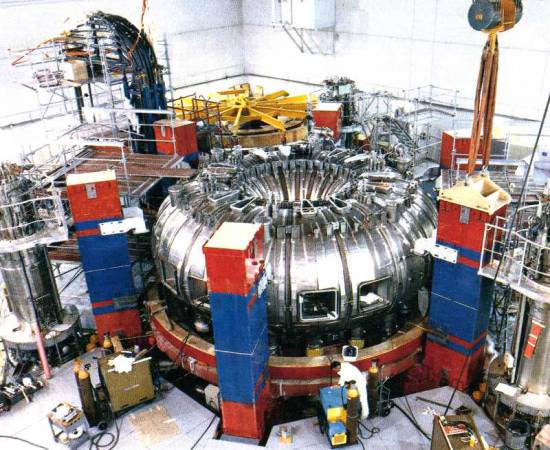
Tore Supra est le premier tokamak, dans les années 1980, à avoir démontré la possibilité d’utiliser la technologie des aimants supraconducteurs pour la fusion. Il a ainsi réellement ouvert la voie technologique vers ITER. Tore Supra a ensuite continué systématiquement la mise au point des autres technologies-clés pour le maintien des conditions de fusion dans un tokamak (injection en continu de puissance, évacuation en continu de la chaleur, contrôle en temps réel…) avec de vrais succès et records mondiaux, dont notamment des plasmas maintenus plus de six minutes à très haute puissance injectée, au début des années 2000. Le tokamak EAST.

La Chine a voulu très tôt suivre la même voie de recherche, probablement grâce à l’excellente collaboration que nous avions déjà en place. Elle a ainsi conçu et construit le tokamak EAST, sur des concepts très proches de Tore Supra, et de très nombreux échanges ont permis l’émergence rapide d’EAST.
Quand il s’est agi de faire évoluer les technologies de composants face au plasma de Tore Supra (milieu des années 2010), en soutien au programme ITER, la Chine a très largement soutenu le CEA et j’ai voulu d’une certaine manière souligner ce « jumelage » grandissant entre les deux tokamaks en rebaptisant Tore Supra en WEST, combinant le clin d’œil géographique au fait que Tore Supra embarquait ainsi une technologie à base de tungstène, dont le symbole chimique est le W.
Que faut-il faire pour susciter des nouvelles vocations en France ? Comment cela se passe-t-il en Chine ?

La Recherche en général a besoin des meilleurs talents. Elle se développe ainsi sur un terreau de vocations. Dans le cas de la fusion, le défi est l’un des plus importants auquel l’humanité se soit attaquée. La route est encore assez longue et nécessite un soutien fort de la part des États mais aussi, de plus en plus, des acteurs de l’Energie au sens large, et des investisseurs privés. On voit actuellement un intérêt grandissant de ce côté. Il est de nature à soutenir ces vocations. Ceci est valable en Occident, mais également en Chine.
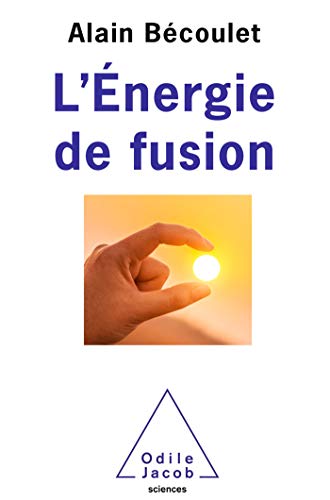
Votre livre, L’énergie de fusion, publié en français en 2019 chez Odile Jacob et déjà traduit en anglais et en néerlandais, sortira bientôt en chinois, c’est un bon signe ?
Ce livre a en effet pour but de sensibiliser le plus largement possible aux recherches en fusion, en « racontant » avec des mots simples quelles sont les avancées scientifiques et techniques déjà acquises et quels sont les défis qu’il reste à relever jusqu’au réacteur.
Il est de nature à susciter de nouvelles vocations, je l’espère, et les retours que j’ai des lecteurs et des éditeurs me font très plaisir.
Comment réagissez-vous au prix que la Chine vous a décerné ?
Comme je l’ai dit dans mon discours, au-delà de l’immense honneur que le gouvernement chinois me fait en me décernant ce prix plus que prestigieux, c’est la recherche en fusion et son caractère totalement ouvert et collaboratif qui sont distingués. Ma conviction professionnelle la plus profonde est que la Science est l’un des vecteurs les plus puissants du rapprochement entre les peuples, et donc de la paix. La volonté de savoir, de connaître, de décoder la Nature, est une source inépuisable et universelle de l’être humain. Je suis particulièrement fier d’y contribuer et très reconnaissant que cela ait été reconnu et salué par le gouvernement chinois au travers de ce prix. Il couronne aussi de très belles rencontres et amitiés qui se sont développées au cours de ces années, et le plaisir à chaque fois renouvelé pour moi des visites en Chine.
Eduardo Greaves: l’avenir du nucléaire passe par le thorium
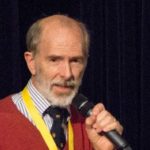
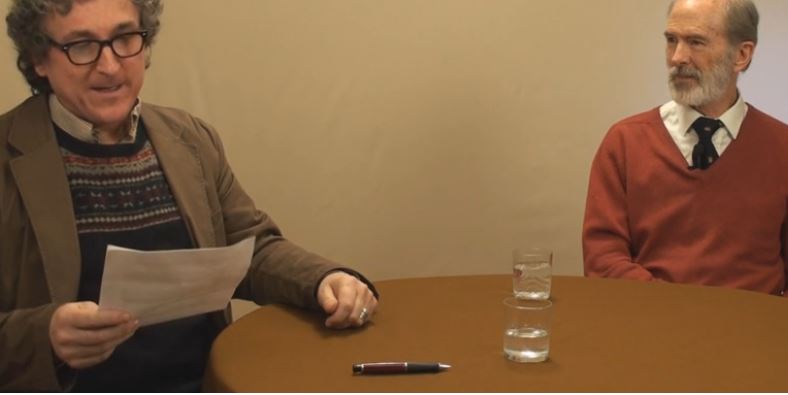
Interview par Karel Vereycken du Professeur Eduardo GREAVES, spécialiste en physique nucléaire à l’Université Simon Bolivar de Caracac au Vénézuéla. La discussion porte sur les enjeux pour l’humanité du développement des réacteurs nucléaires de 4e génération utilisant le thorium et pouvant substituer les combustibles solides actuels par des combustibles liquides bien plus sûrs et plus performants.